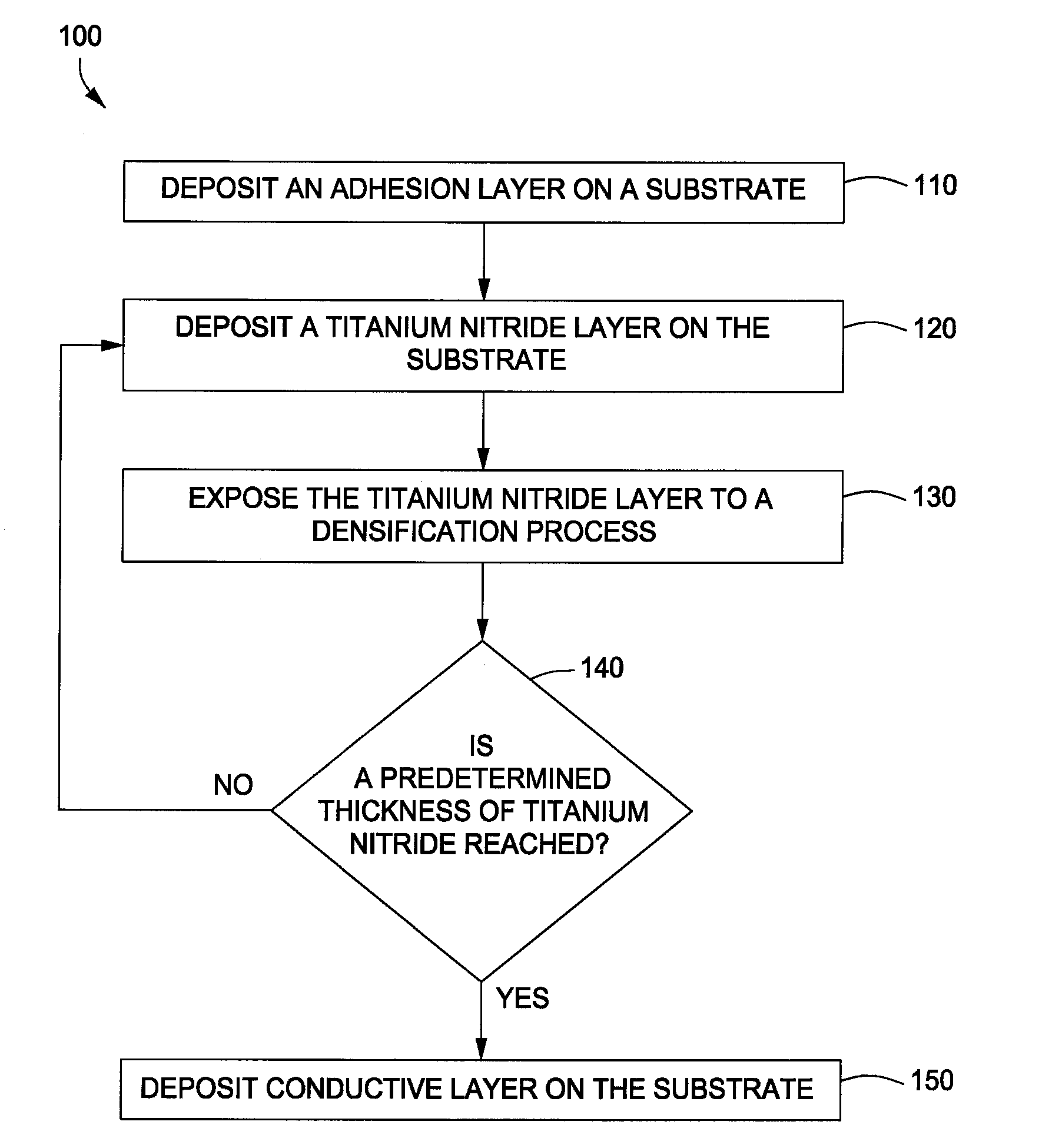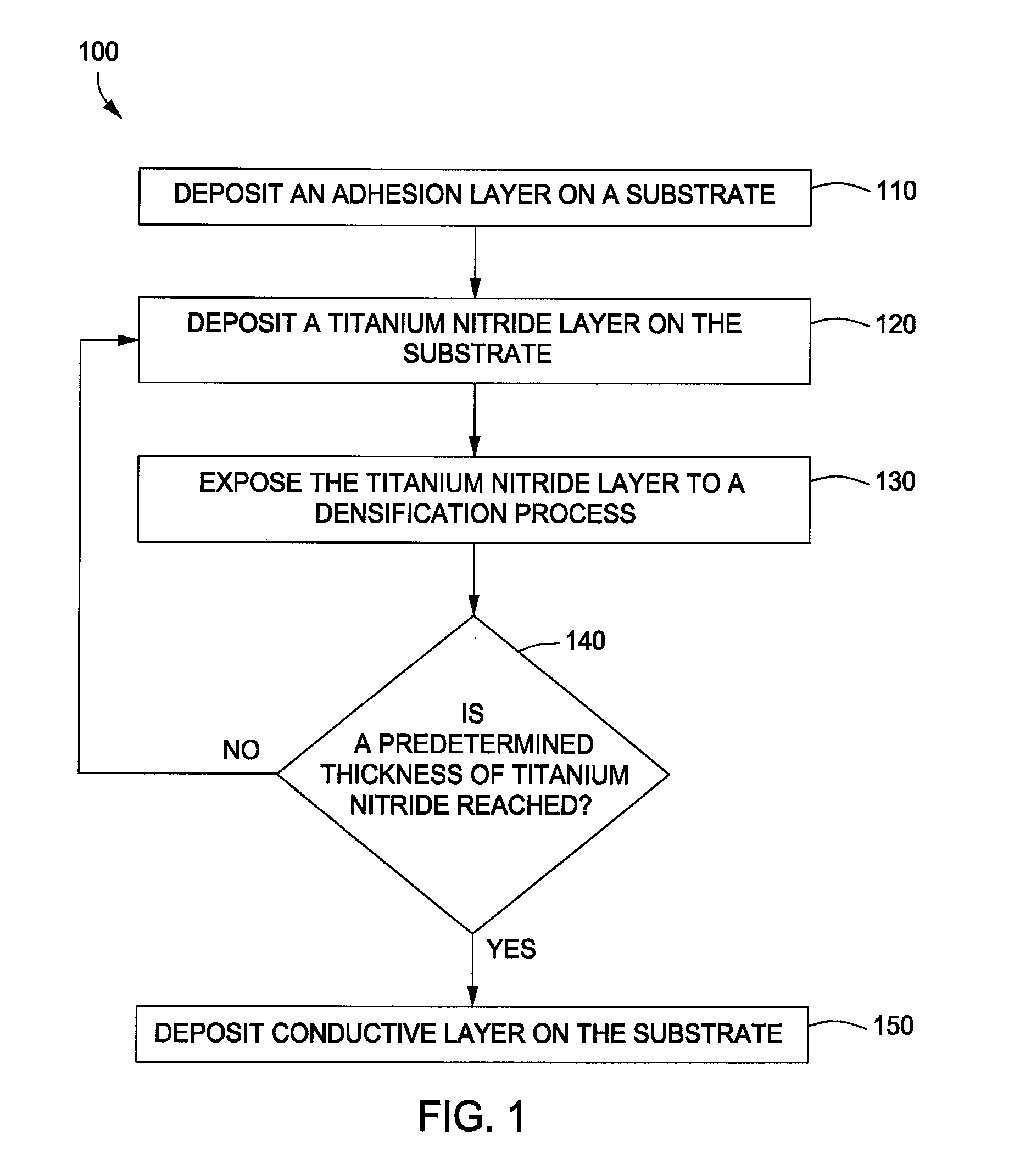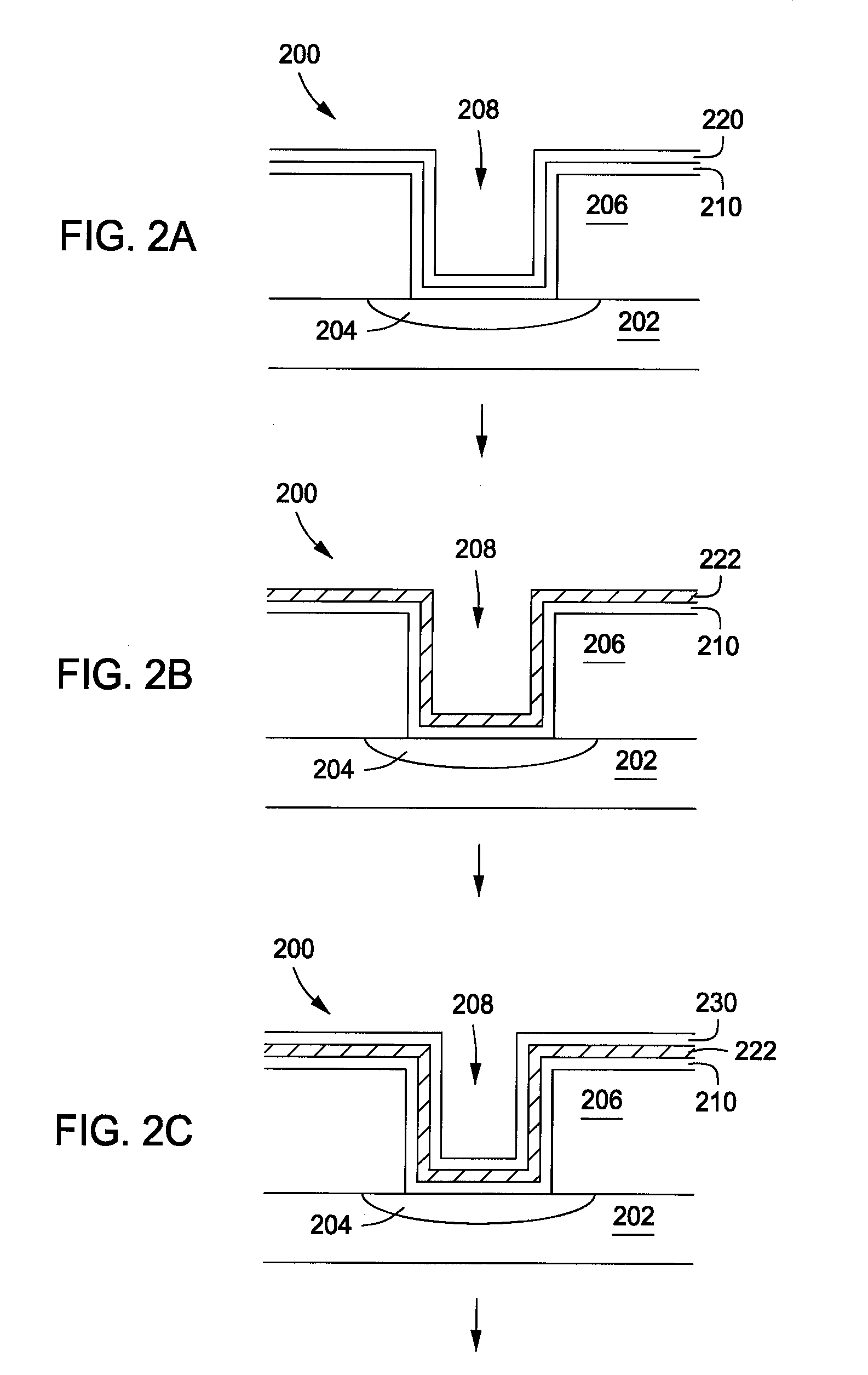Deposition and densification process for titanium nitride barrier layers
a technology of titanium nitride and densification process, which is applied in the direction of semiconductor/solid-state device manufacturing, basic electric elements, electric devices, etc., can solve the problems of large amount of ongoing effort, failure of device, and difficulty in deposition process
- Summary
- Abstract
- Description
- Claims
- Application Information
AI Technical Summary
Benefits of technology
Problems solved by technology
Method used
Image
Examples
examples
200 mm TXZ® Chamber
[0053]A high-pressure process in a TXZ® chamber, available from Applied Materials, Inc., located in Santa Clara, Calif., is used for formation of the titanium nitride barrier layer. Low-resistivity titanium nitride thin-films are thermally deposited using a high-pressure MOCVD process. The chamber is plumbed to a titanium precursor, such as TDMAT or TDEAT. The titanium nitride thin film is subsequently plasma post treated with a hydrogen-nitrogen plasma generated by a high plasma power within a range from about 750 watts to about 1,250 watts in order to reduce the film resistivity.
Overview of the Formation of Titanium Nitride Barrier Layer
[0054]The substrate is heated to a predetermined temperature (e.g., about 360° C.). TDMAT is vaporized and exposed to the substrate to thermally decompose as a film deposited on the substrate surface at a low temperature of about 360° C. which corresponds to a heater temperature of about 380° C. and at a high chamber pressure of ...
PUM
| Property | Measurement | Unit |
|---|---|---|
| time | aaaaa | aaaaa |
| temperature | aaaaa | aaaaa |
| thickness | aaaaa | aaaaa |
Abstract
Description
Claims
Application Information
 Login to View More
Login to View More - R&D
- Intellectual Property
- Life Sciences
- Materials
- Tech Scout
- Unparalleled Data Quality
- Higher Quality Content
- 60% Fewer Hallucinations
Browse by: Latest US Patents, China's latest patents, Technical Efficacy Thesaurus, Application Domain, Technology Topic, Popular Technical Reports.
© 2025 PatSnap. All rights reserved.Legal|Privacy policy|Modern Slavery Act Transparency Statement|Sitemap|About US| Contact US: help@patsnap.com



